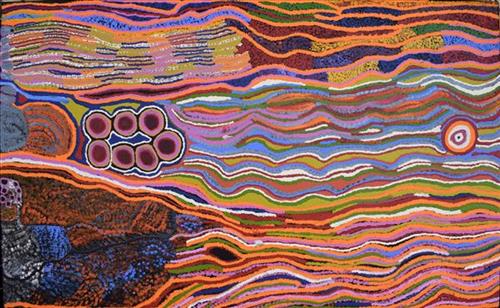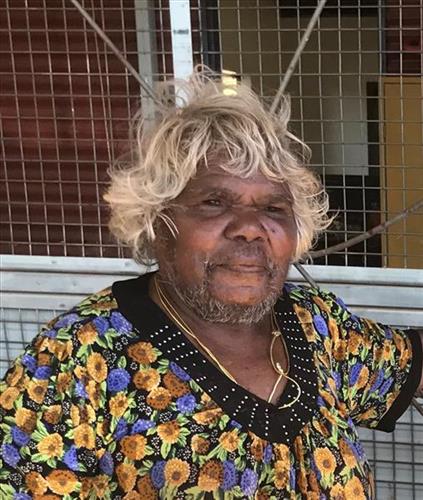114182001452
Kungkarrangkalpa (Seven Sisters) – Angilyiya Mitchell
This is a Tjukurpa Story (Dreamtime Story) about the constellations of Pleiades and Orion which is common to most Indigenous Australian groups. The different versions of this story depend on where you live and the significance’s of local Dreaming places.
The sisters, known as the Kungkarrangkalpa women, are said to be Pleiades while Orion is Nyiru or Nyirunya. Nyiru fell in love with the sisters but he was of the wrong skin group to marry, but he still pursued them across the country.
The seven sisters travel across the land to escape Nyiru’s unwanted attentions, but he is persistent and always finds them. Eventually sisters fly into the sky to escape Nyiru forming the constellation.
As Nyiru is chasing the sisters he tries to catch them by using magic to turn into the most tempting kampurarrpa (bush tomato) and the most beautiful Yirli (wild fig tree), for them to eat and camp under. However, the sisters are knowledgeable of his magic and too clever for Nyiru who they outwit again and again. They go hungry and run through the night rather than be caught by Nyiru.
In one version of the story Nyiru manages to capture the big sister and has his way with her. The other sisters rescue the big sister and nurse her back to health. It is said he also captures the youngest sister, but with the help of the oldest sister, she escapes back to her sisters who are waiting for her.
This painting takes place at Kuruala, a sacred place for women in Angilyiya’s mother’s country south of Papulankutja (Blackstone). Wati Nyiru was following them, disguising himself as a Quandong tree, a Yirli (wild fig tree), and then a carpet snake, spying on them as they made camp, building wiltja (shelter) and wind breaks and digging for food.
This is the story about my Grandmother’s country, south of Papulankutja. You can see today the circles at the site in the cave from that Dreamtime story. It’s the young girls turning into young women. The bigger circles are those already women. They have been travelling for food and they saw that man had already taken the big sister. So they are taking her to the second cave for resting and getting better. You can see that man sitting he’s already attacked her. Rock hole down the bottom called Kuru Ala, they drank that water in the early days, and still today you can drink, water is still there




